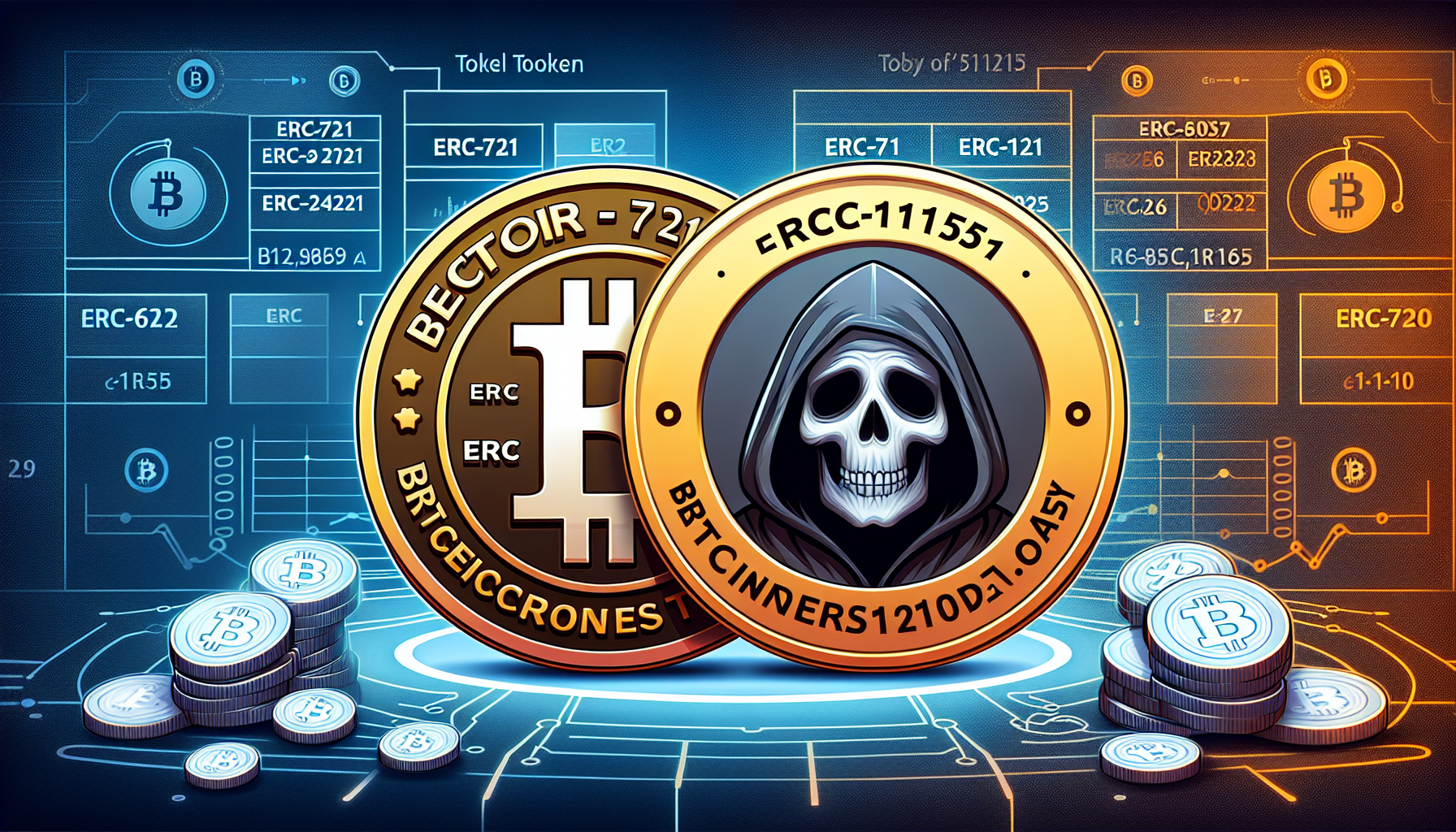ERC-721 vs ERC-1155: Key Differences in NFT Token Standards
Introduction: Why Token Standards Matter in Blockchain
Did you know that over 80% of NFT projects currently use either ERC-721 or ERC-1155 standards? Choosing the right token standard can make or break your blockchain project. Let’s break down these two popular NFT standards in simple terms – even your tech-averse aunt could understand!
What is ERC-721? The OG NFT Standard
ERC-721 is like giving every trading card in your collection its own certificate of authenticity:
- Unique identification: Each token has distinct metadata (think CryptoPunks)
- 1:1 ownership: Perfect for digital art and collectibles
- Higher gas fees: Each transfer requires separate transactions
According to DappRadar 2025 data, ERC-721 still powers 62% of blue-chip NFT collections.

ERC-1155: The Flexible Multi-Token Solution
Imagine a Swiss Army knife for tokens – that’s ERC-1155:
- Batch transfers: Send multiple token types in one transaction (saves up to 90% gas fees)
- Fungible + non-fungible: Supports both NFTs and semi-fungible tokens
- Game-changer for blockchain gaming and metaverse projects
Side-by-Side Comparison: When to Use Each Standard
Here’s a quick cheat sheet for developers:
| Feature | ERC-721 | ERC-1155 |
|---|---|---|
| Token Type | Only NFTs | NFTs + fungible tokens |
| Gas Efficiency | High cost | Low cost |
| Best For | Digital art, collectibles | Game items, tickets, memberships |
Future Trends: The Evolution of Token Standards
With the rise of fractionalized NFTs and dynamic metadata, we’re seeing hybrid approaches emerge. The recent Ethereum Cancun upgrade has further optimized gas fees for both standards.
Conclusion: Choosing Your NFT Standard
Whether you’re creating digital collectibles (ERC-721) or complex blockchain ecosystems (ERC-1155), understanding these token standards is crucial. For more blockchain insights, check out our guide on NFT market trends and Ethereum gas fee optimization.
Disclaimer: This article does not constitute financial advice. Always conduct your own research before deploying smart contracts.
bitcoinsnewstoday
Dr. Alan Turington
Published 28 papers on blockchain interoperability
Lead auditor for Polygon 2.0 security framework


